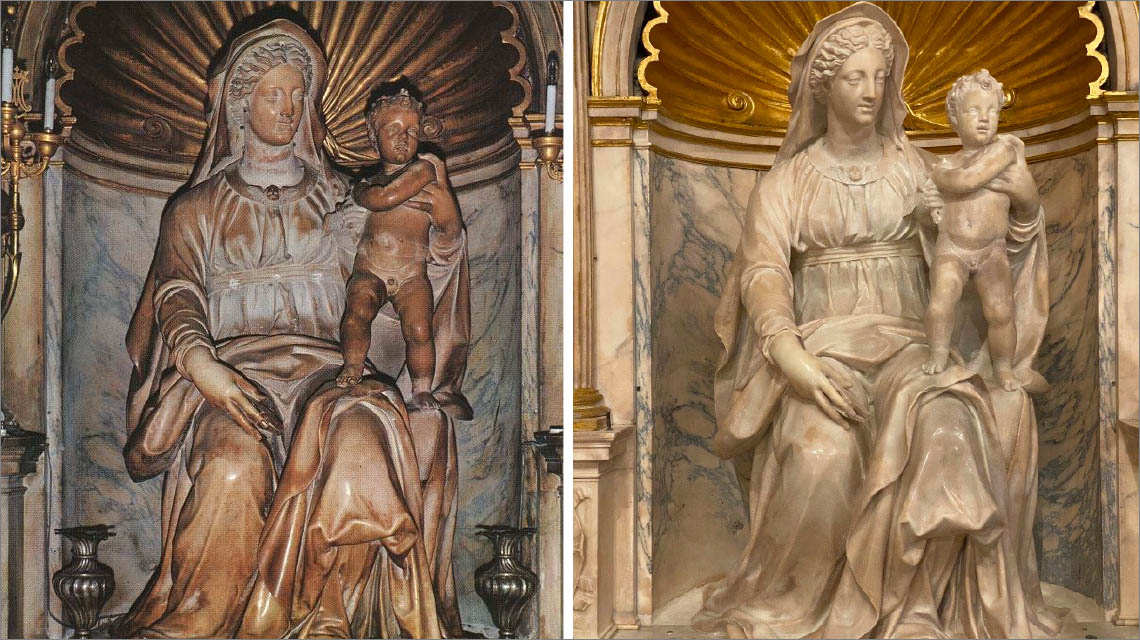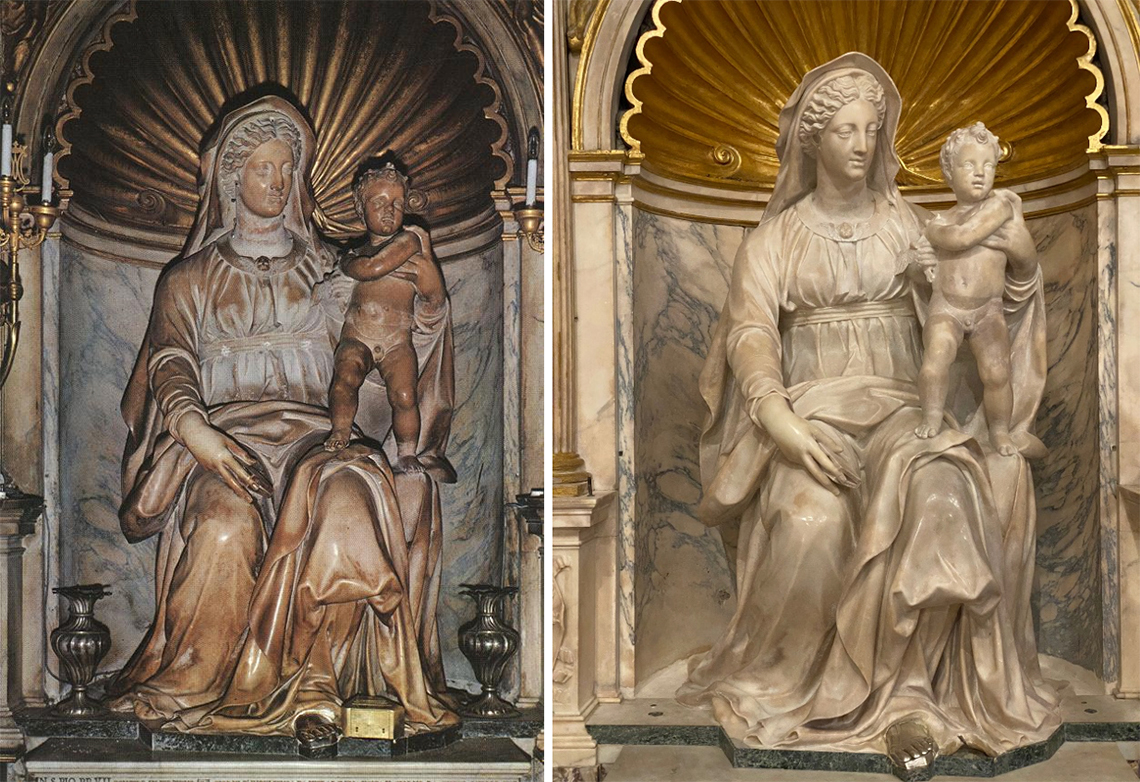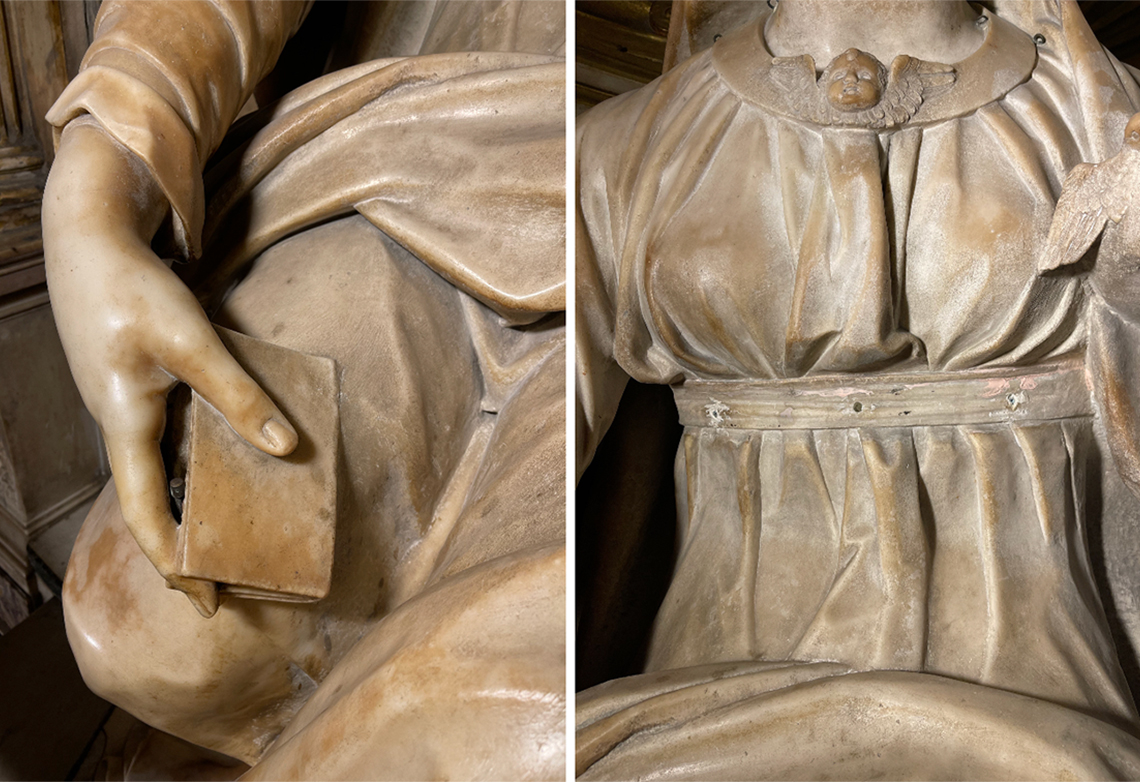Italian National Agency for New Technologies, Energy and Sustainable Economic Development

Cultural heritage: Biorestoration, ENEA researchers bring Renaissance marble statue back to life
Biorestoration with bacteria of a Jacopo Sansovino’s sculpture in Rome
A team of ENEA researchers performed a bio-cleaning intervention to restore the Madonna del Parto (Our Lady of ChildBirth), a Renaissance marble statue by Jacopo Sansovino housed at the Basilica of St. Augustine in Rome and an object of devotion for pregnant women for centuries.
Researchers deployed bacteria to selectively remove substances of different nature, without affecting the marble. The intervention, which lasted six months and was coordinated by restorer Anna Borzomati, was promoted by the Special Superintendence of Rome, in collaboration with Intesa Sanpaolo.
"The importance of the artwork and its deterioration required in-depth diagnostic investigations that made it possible to characterize the deposit materials and the stains present on the surface such as oils, waxes and protein material", explained ENEA researcher Chiara Alisi at the Laboratory of Observations and Measurements for the Environment and Climate.
Over the centuries the statue has been touched and soaked with the holy oil present in the votive candles, causing the browning of a large part of the marble surface, particularly on the Child Jesus.
“We began by performing several exploratory tests with bacterial strains from the ENEA collection, to identify the most suitable microorganisms to remove the substances responsible for the deep brown stains on the marble. We identified 4 different strains, capable of selectively metabolizing the deposits previously identified by chemical investigations”, continued Alisi.
The bacteria were applied in a sequence through a gel, on a sheet of tissue paper moistened with water to make it adhere to the surface. The contact time was approximately 12 hours for each single pack, sealed with transparent film.
“The long application times, necessary to remove the deposits, and the selectivity of the bacteria employed allowed us to operate safely, respecting the original material, safeguarding the health of both operators and visitors within an enclosed space like the Basilica of Sant'Agostino”, said Alisi. "The bio-cleaning intervention- she concluded – required an approach combining art and science, a joint effort by restorers and researchers to identify the most suitable solution to remove the substances from the marble".
The metabolic capability of bacteria is a new frontier in art restoration already successfully used by ENEA on the marble statues by Michelangelo Buonarroti at the Medici Chapels in San Lorenzo in Florence.
Sculpted by the Florentine Jacopo Tatti known as Sansovino in the second decade of the 16th century commissioned by the Martelli family, the Madonna del Parto is housed in a niche on the right side of the main entrance to Sant'Agostino in Campo Marzio, the Roman basilica which houses also another famous marble staue, the "Madonna with Child and Saint Anne" by Andrea Contucci known as Sansovino [1] (master of Jacopo, who "inherited" his nickname), and famous paintings like the "Madonna dei Pellegrini” by Caravaggio and “Prophet Isaiah” by Raphael.


